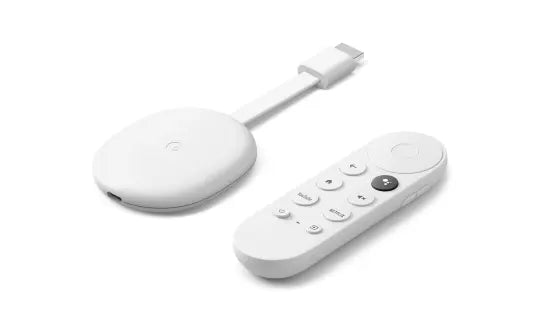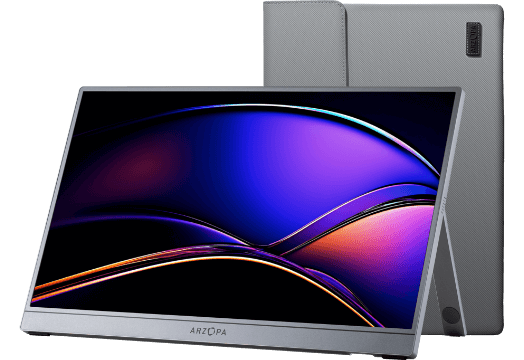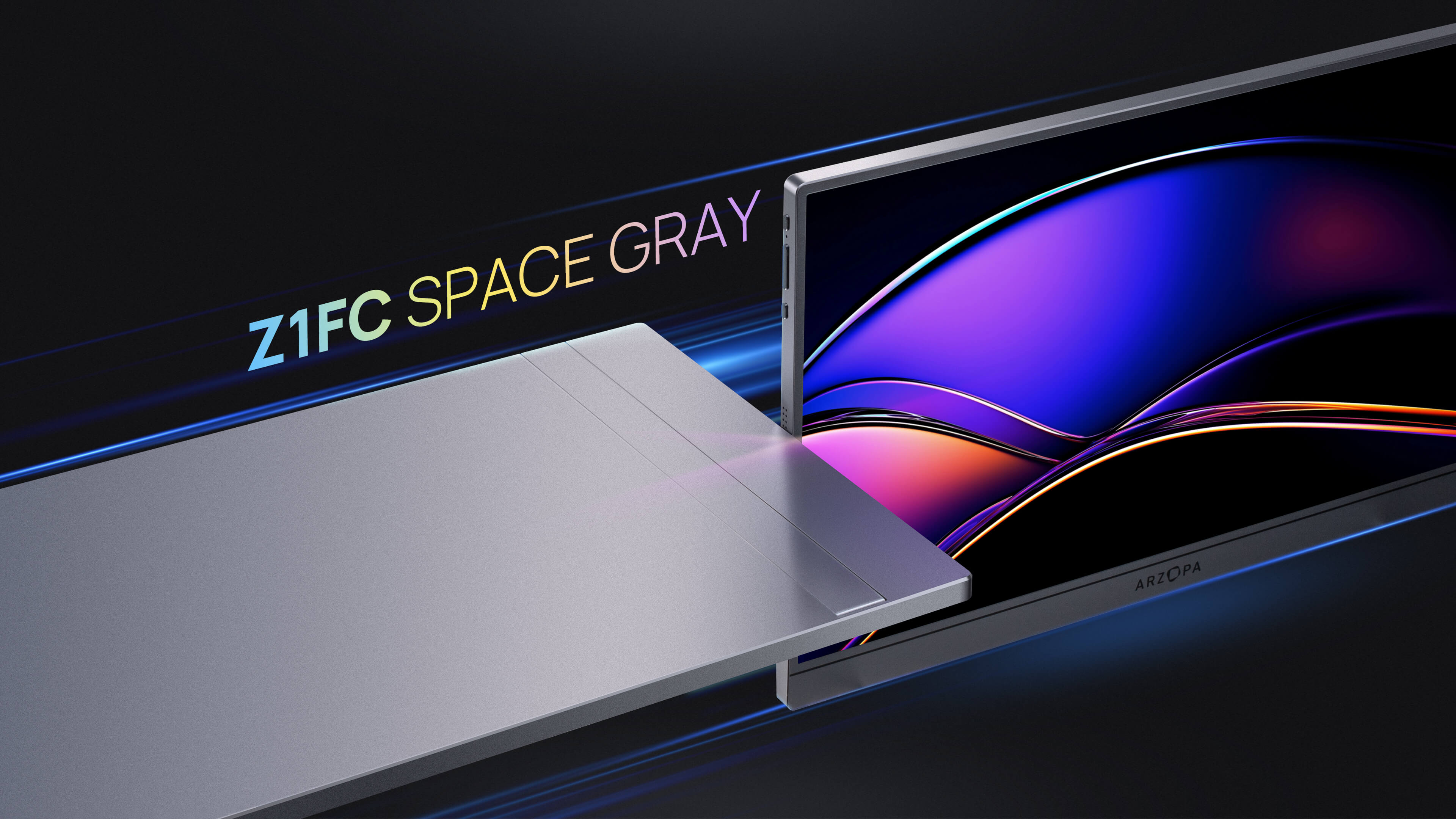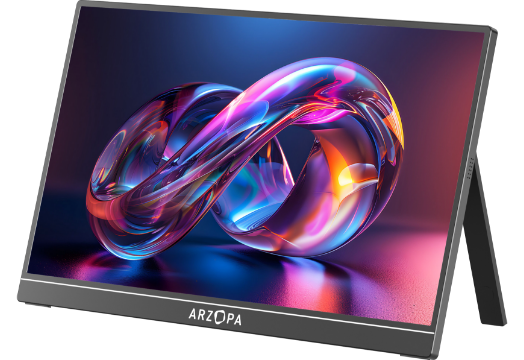Unlocking Productivity: The Ultimate Guide to Portable Monitors Without Mains Power
In today's fast-paced world, efficiency and flexibility are key. Whether you're a digital nomad, a gamer on the go, or a professional needing an extra screen for multitasking, a portable monitor can be a game-changer. But what if you don’t have access to a power outlet? Can you still use a portable monitor effectively?
The answer is yes! Many modern portable monitors are designed to operate without mains power, relying instead on USB power delivery (PD), built-in batteries, or power banks. In this guide, we'll explore how to connect and use a portable monitor without needing a wall socket, the best models available, and tips to maximize your setup.
Quick Comparison of Ways to Power Portable Monitor Without Mains
| Method | How It Works | Pros | Cons | Best For |
|---|---|---|---|---|
| USB-C Power Delivery (PD) | Single USB-C cable connects to a laptop, tablet, or power bank for power & video. |
No extra cables needed; Fast charging & data transfer; Supports touch & audio |
❌ Requires USB-C PD support on device ❌ High power draw may drain battery |
Remote work, gaming, travel (MacBook, iPad Pro, Steam Deck, etc.) |
| Power Bank (USB-C/USB-A) | Uses a high-capacity power bank (18W+) to power the monitor via USB. |
Portable & cord-free; Works with non-PD devices; Long battery life |
❌ Requires compatible power bank ❌ May need dual USB-A for some models |
Travel, outdoor use, coffee shops (when no outlet available) |
| Built-in Battery | Monitor has an integrated battery (3-6 hrs runtime). |
No cables needed; True wireless freedom; Instant setup |
❌ Limited battery life ❌ Heavier than USB-powered models |
Short work sessions, mobile gaming, presentations |
| Car Power Adapter | Uses a 12V car USB-C PD adapter (30W+) for power on the go. |
Great for road trips/RVs; Stable power supply; No battery drain |
❌ Requires car adapter ❌ Not truly portable |
Digital nomads, frequent travelers, truck drivers |
| Wireless Display (Miracast/DLNA) | Connects via Wi-Fi (no cables, but needs power). |
How to Power a Portable Monitor Without Mains Electricity?
1. USB-Powered Monitors (Best for Most Users)
Many portable monitors can be powered directly via USB-C or USB-A from a laptop, tablet, or power bank.
How It Works:
-
USB-C with Power Delivery (PD): A single USB-C cable can deliver both video signal and power (if your laptop supports PD).
-
USB-A (Older Laptops): Some monitors require two USB-A ports (one for power, one for video). Less efficient but still viable for older devices.

Power Bank Compatibility:
If your laptop can't supply enough power, use a high-output power bank (18W+).
Requirements:
- A USB-powered portable monitor (check specs to confirm).
- A USB-C or USB-A cable (usually included).
- A power source (laptop, power bank, etc.).
Steps to Power a Portable Monitor Without Mains Electricity:
- Check if your monitor supports USB power delivery (PD). Some monitors (like ASUS ZenScreen, Lenovo ThinkVision) can run entirely via USB-C.
- Connect via USB-C (Best Option): Plug the USB-C cable into your laptop/PC’s USB-C port (must support Power Delivery); The monitor will draw power and receive video signal over the same cable.
- Connect via USB-A (if no USB-C): Use a USB-A to USB-C cable (if your monitor supports it); Some monitors may need two USB-A ports (one for power, one for video).
- Use a Power Bank (if laptop can’t power it): Connect the monitor to a high-output power bank (at least 10W+); Some monitors (like the Arzopa A1 Portable Monitor) work well with 18W+ power banks.
2. Battery-Powered Portable Monitors
Some models come with built-in batteries, eliminating the need for external power.
Steps:
- Charge the monitor via USB-C before use.
- Turn it on—no external power needed while the battery lasts (typically 3-6 hours).
Best Options:
- ViewSonic TD1655 (3-6 hours battery life).
- Lenovo ThinkVision M14t (USB-C powered but can also work with power banks).
Pros & Cons:
✅ No cables needed for short sessions.
❌ Limited battery life (typically 3-6 hours).
3. Car Power Adapters (For Travelers)
If you're frequently on the road, a 12V car USB-C PD adapter (30W+) can keep your monitor running while driving.
4. Use a Portable Laptop Power Bank
If your monitor doesn’t have a battery but supports USB power:
-
Get a high-capacity power bank (e.g., Anker 737, Baseus 65W).
-
Connect via USB-C PD (must match monitor’s power needs, usually 5V/2A or 9V/2A).
5. Wireless Casting (Not Ideal for All Use Cases)
Some users attempt wireless casting using:
-
Chromecast
-
Miracast
-
Wireless display adapters

Cons of wireless casting:
-
Requires monitor to still be powered via USB-C
-
Input lag makes it unsuitable for gaming or editing
-
Setup can be unreliable across devices
Unless you're doing light presentations, we don’t recommend this for serious productivity.
Best Portable Monitors for Cord-Free Use
| Model | Power Source | Battery Life | Key Features |
|---|---|---|---|
| ASUS ZenScreen MB16ACE | USB-C PD | N/A | 15.6", 1080p, lightweight |
| Arzopa Z1RC Portable Monitor | USB-C PD / Power Bank | N/A | 16", 1080p, 2.5K slim design |
| ViewSonic TD1655 | Built-in battery | ~4-6 hours | 15.6", 1080p, touchscreen |
| JSAUX FlipGo (16" Pro) | USB-C PD / Power Bank | N/A | Dual 2.5K screens, foldable |
| INNOCN N2F Pro | USB-C PD / Battery | ~4 hours | 15.6", 1080p, touchscreen |
Is a Portable Monitor Worth It?
Absolutely! Whether you're:
- A remote worker needing a second screen in a café.
- A gamer wanting a bigger display for your Nintendo Switch.
- A photographer needing an on-the-go editing monitor.
A portable monitor without mains power gives you flexibility, efficiency, and mobility. With options ranging from USB-powered screens to battery-operated models, there’s a perfect fit for every need.
Troubleshooting Common Issues
Monitor Not Turning On?
- Ensure your USB-C cable supports Power Delivery (PD).
- Try a higher-wattage power source (e.g. 65W charger instead of 30W).
Flickering or Disconnects?
- Use a shorter, high-quality USB-C cable.
- Avoid cheap adapters that don’t support full bandwidth.
Mac Users: Display Not Detected?
- Some MacBooks require DisplayLink software for multi-monitor setups (e.g., JSAUX FlipGo Pro).
- Check System Settings > Displays and press Option + Detect Displays.
Conclusion
Going cordless doesn’t mean going powerless. With the right setup, you can enjoy a full dual-screen experience without the bulk of power bricks and tangled wires. What’s your experience with portable monitors? Share your thoughts in the comments!


























